How can I secure a floating toilet flange that is not properly attached to the floor and has rusty screws that do not hold it in place?
Remember how I mentioned the floating toilet situation in my last post? Well, I decided to investigate further and it turns out the flange was not properly secured to the floor. The rusty screws were barely holding on, leaving enough space between the flange and the wood below to add an expansion ring. It seems like this should have been done during the original installation years ago.
Now the flange is just kind of hanging out above the wood, but luckily it lines up perfectly with the tiles in terms of height. Any ideas on how to properly secure it?
Oh, and just a heads up, the black pipe underneath the flange angles to the right at a 45-degree angle, not straight down.
And worst-case scenario, I could potentially open the ceiling on the first floor to access the pipes.
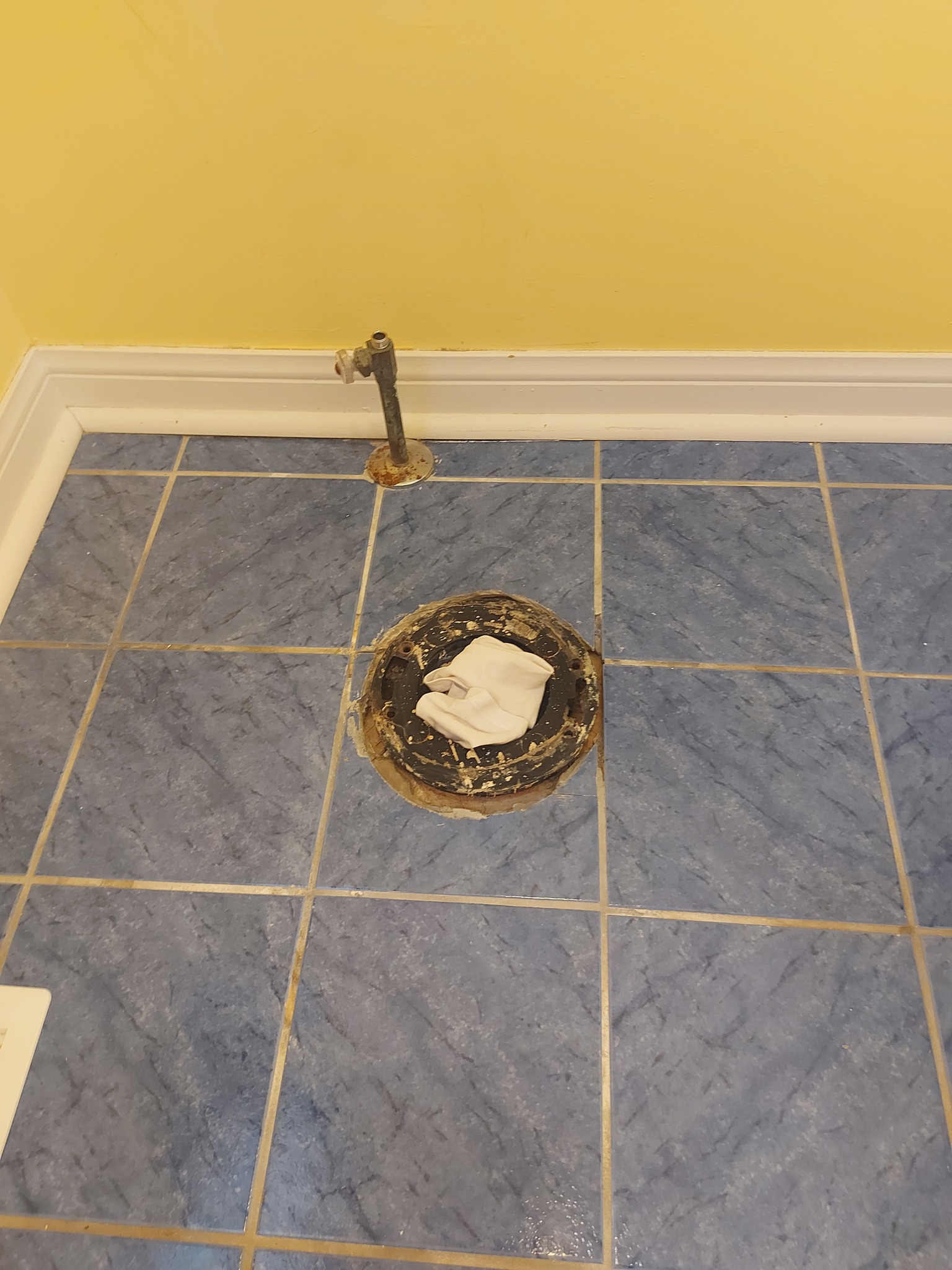
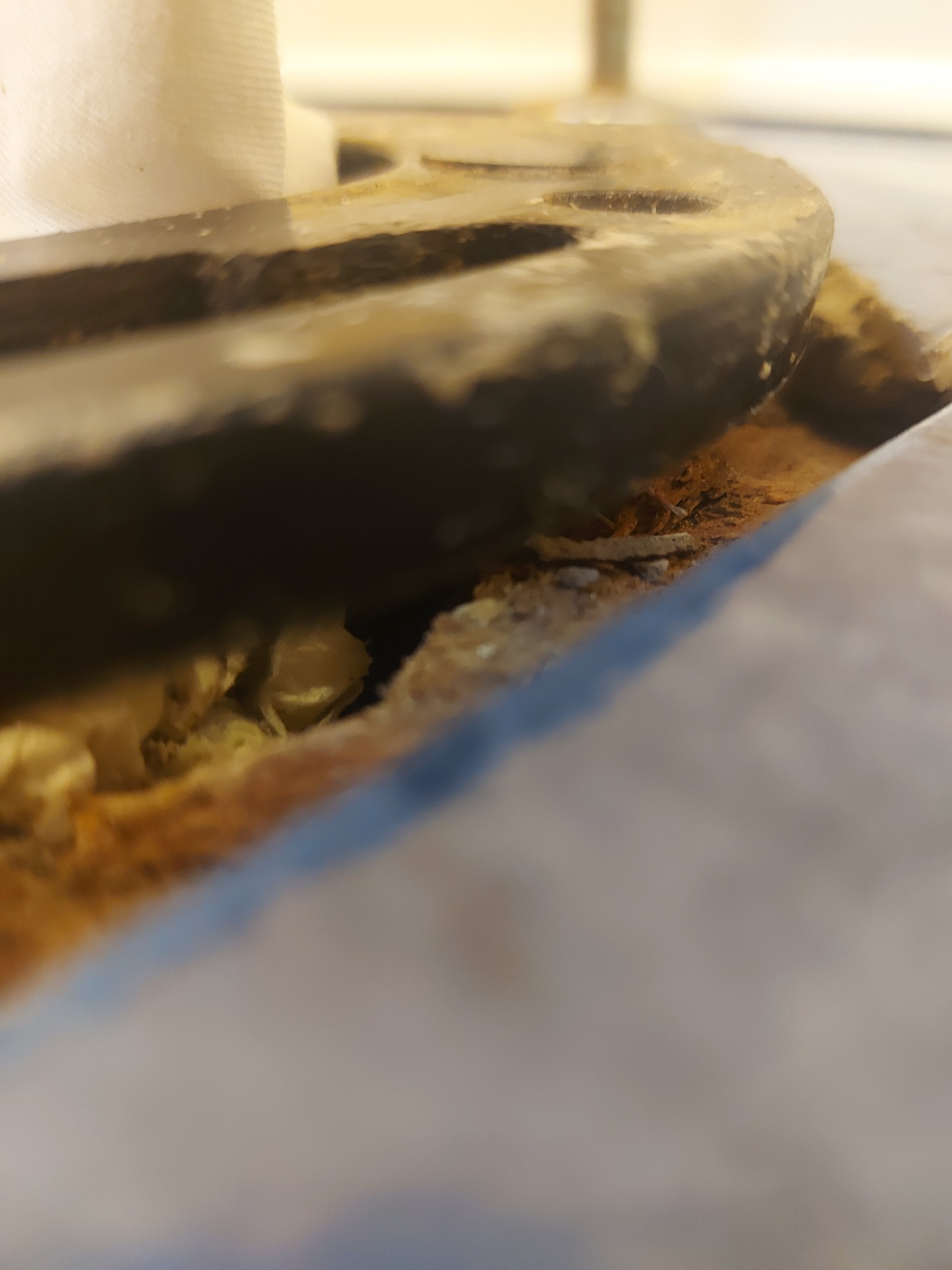
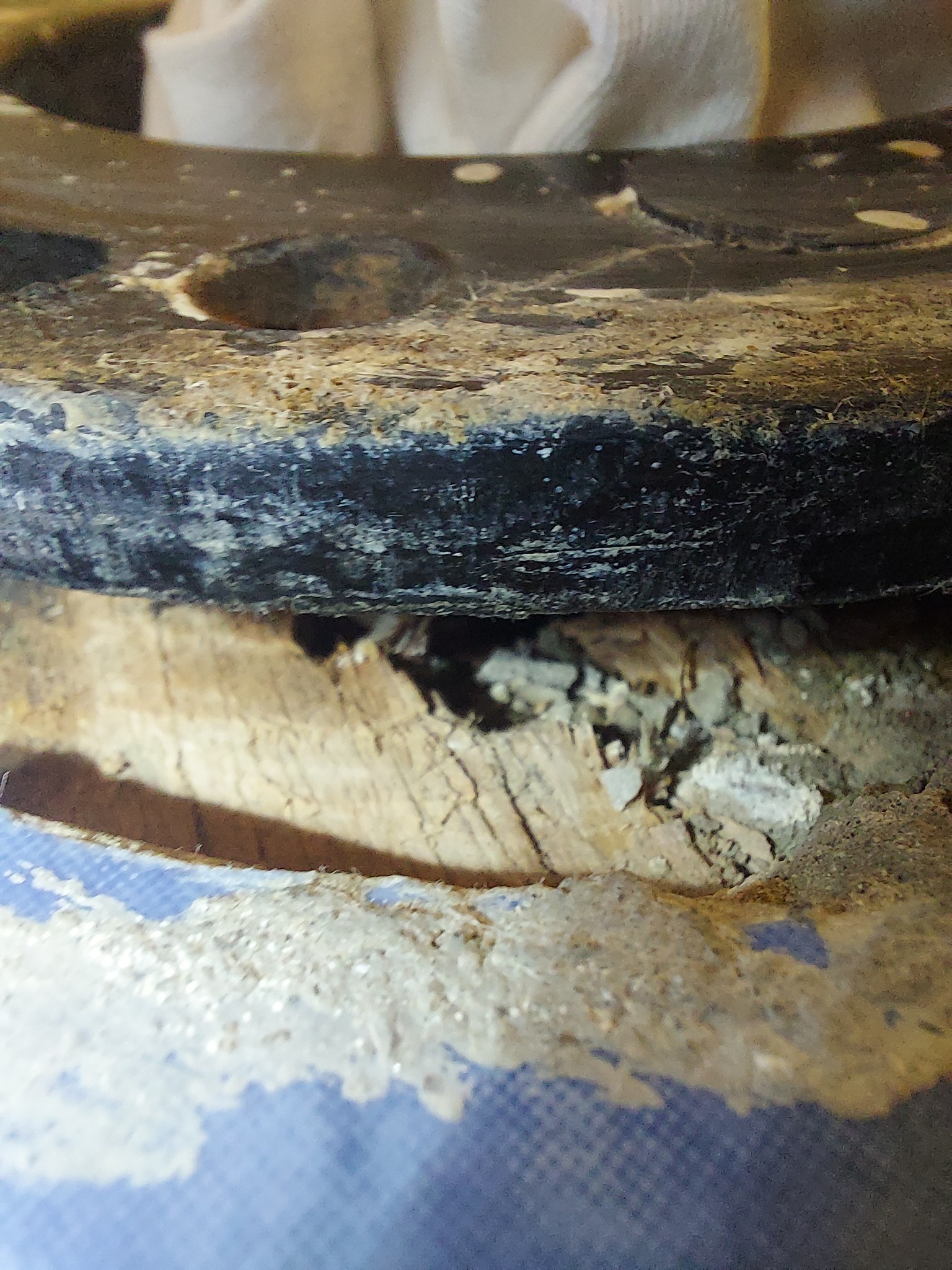
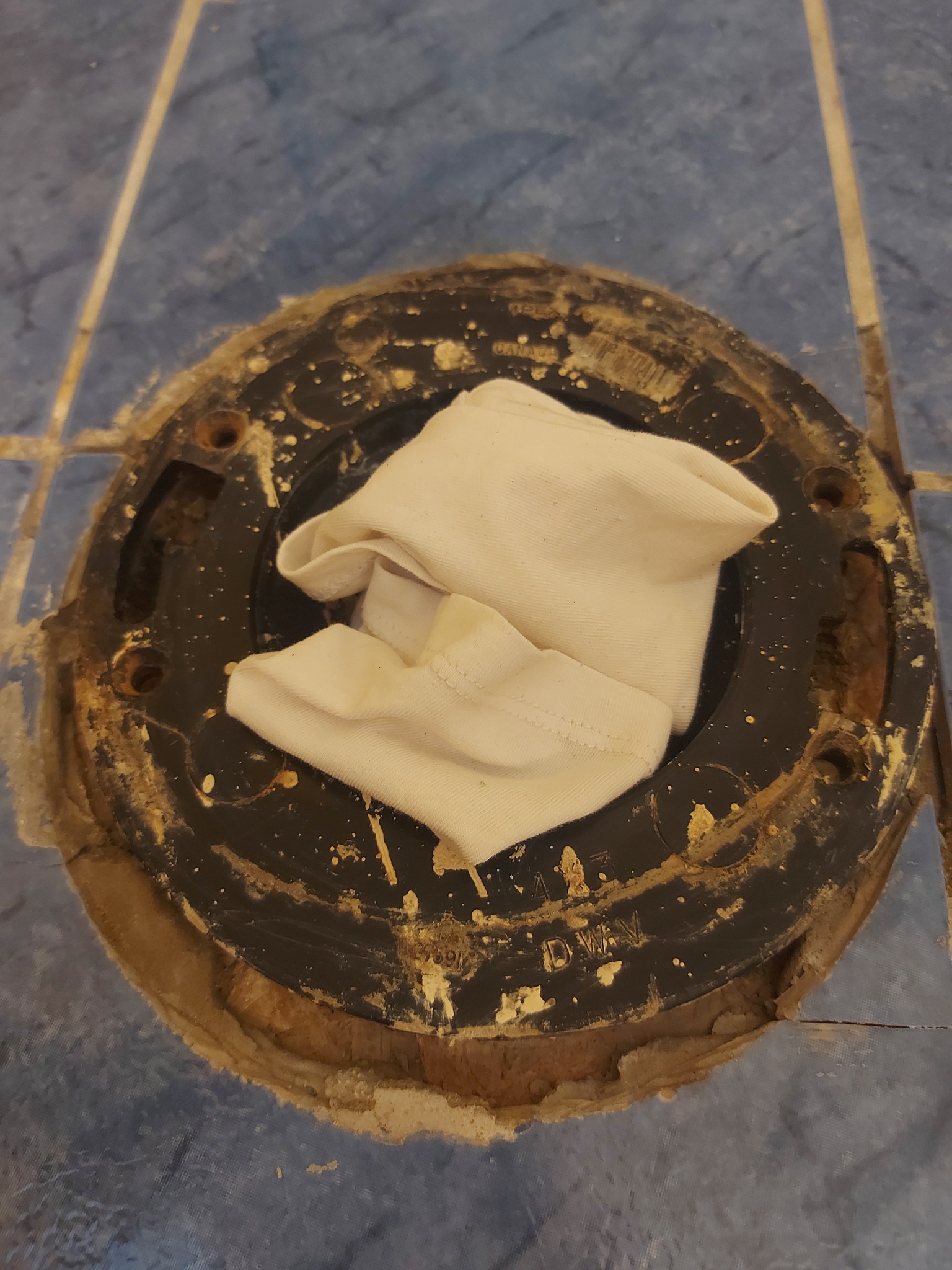
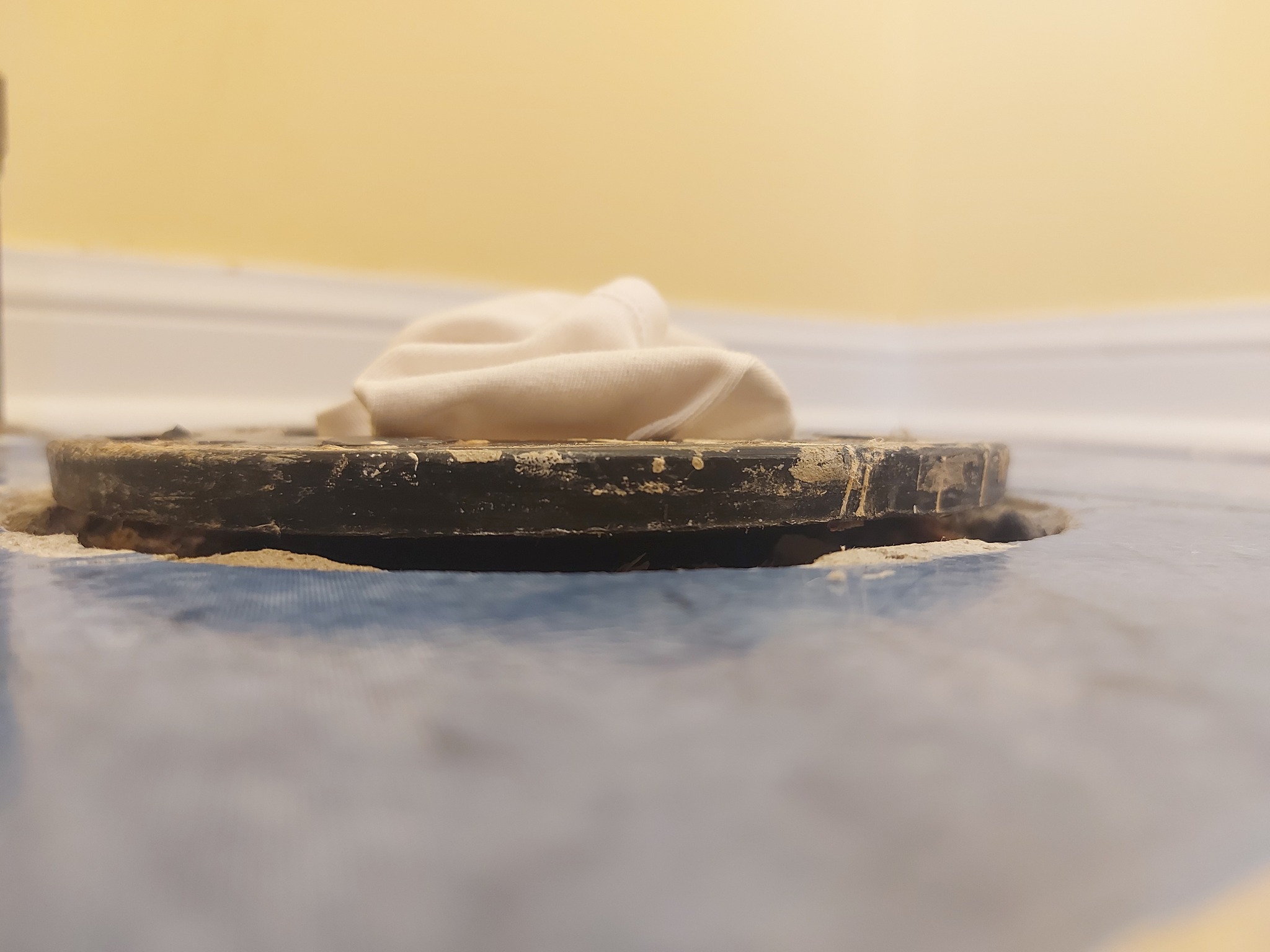
Looks like your toilet is having some trouble staying up straight 😂
When you press on the flange, does it move downwards at all if the top is above the tile?
Hey, , definitely not!
Maybe it needs support from somewhere, but it’s tricky to figure out where exactly without lifting up part of the floor.
Seems like you’ve had quite the adventure tackling this DIY project. Props to you for removing the toilet and assessing the situation – you’re well on your way to a proper fix.
The flange issue you’re facing is a common one, and you’re right on the money – it should have been securely installed from the start. Since it’s not touching the wood, adding an expansion ring for extra stability is a smart move.
So, what’s next? Here are a few tips for you:
– Clean the area: Before you do anything else, make sure to clean around the flange and the wood. A clean workspace will help the screws go in smoothly.
– Check the pipe: Ensure that the black pipe is in good shape and won’t cause any issues when you secure the flange. You definitely don’t want to accidentally damage it.
– Expansion ring: Insert an expansion ring between the flange and the wood to fill the gap and provide stability. Make sure it lines up
Personally I’d suggest …
Take a look at the floor to check for any sagging or dropping. It’s possible that it was initially installed properly but now the floor is sagging because of a leak or moisture.
This is a tricky situation. The flange was definitely attached to the floor at some point, but the pipe expansion caused the screws to rip out. If nothing is done, the same problem will likely occur again. One idea could be to cut the pipe below the flange, but that would involve cutting open the drywall, running hot water, and ensuring everything is aligned while the pipe expands.
I was giving it some more thought, and I believe using a flexible rubber coupling for the pipe under the floor could be a good idea.
Just a heads up, if you mess up, there’s a chance it might come apart and start leaking. It’s best to install the expansion coupling while the pipes are still cold, that way it can compress properly and reduce the risk of leaks.
I appreciate your help!